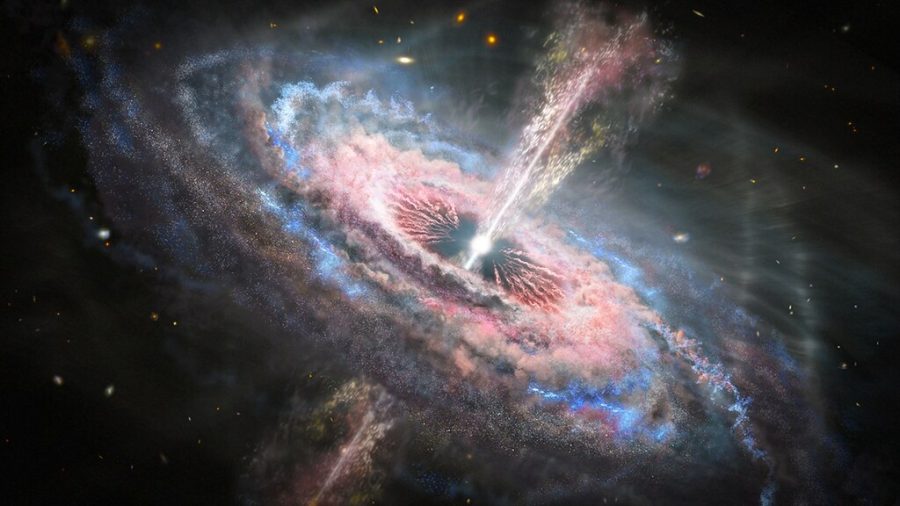Scientists unveil mystery behind quasars
May 8, 2023
Astrophysicists recently concluded that quasars, one of the most intriguing astronomical concepts of the past century, are likely caused by collisions between galaxies.
Quasars were initially discovered in the 1950s and are some of the most energetic objects in the universe, ejecting material out into space from the centers of galaxies where they can be found. Most galaxies have supermassive black holes in the middle, which are formed by the death of stars. Quasars contain black holes within them, which is what releases this massive energy.
Quasars are further away from Earth than any other discovered object in the universe, according to NASA. The fact that they can be perceived by humans from billions of light-years away, while still being bright enough to drown out all the light from surrounding stars, puts into perspective just how energy-rich these star-like entities are.
Thus the origins of quasars have been of great interest. Researchers at the University of Sheffield and the University of Hertfordshire used observations from the Isaac Newton Telescope in La Palma, one of the Canary islands, to compare 48 galaxies with quasars to over 100 galaxies without them.
In the galaxies that have quasars, the researchers described “the presence of distorted structures” that illustrated collisions of galaxies.
Using data from the Isaac Newton Telescope, researchers were able to conclude that intergalactic collisions were three times more likely in quasar-containing galaxies than in galaxies without quasars.
The black holes at the center of galaxies are usually unable to reach the gases on the edges of their galaxy. When galaxies collide with each other, these gases are jostled into the black hole to be consumed, depriving the system from the material required to form new stars. The radiation given off by the interaction of black holes, galactic collisions and gases around the edge of a galaxy are what create a quasar.
This research was published in the Monthly Notices of the Royal Astronomical Society.
“Quasars are one of the most extreme phenomena in the universe, and what we see is likely to represent the future of our own Milky Way galaxy when it collides with the Andromeda galaxy in about five billion years,” Professor Clive Tadhunter of the University of Sheffield, co-author of the study said. “It’s exciting to observe these events and finally understand why they occur – but thankfully Earth won’t be anywhere near one of these apocalyptic episodes for quite some time.”
Ultimately, this newfound knowledge of quasars can help further illuminate human understanding of the night sky.
“Quasars play a key role in our understanding of the history of the universe, and possibly also the future of the Milky Way,” Dr. Johnny Pierce of the University of Hertfordshire, another co-author, said.








